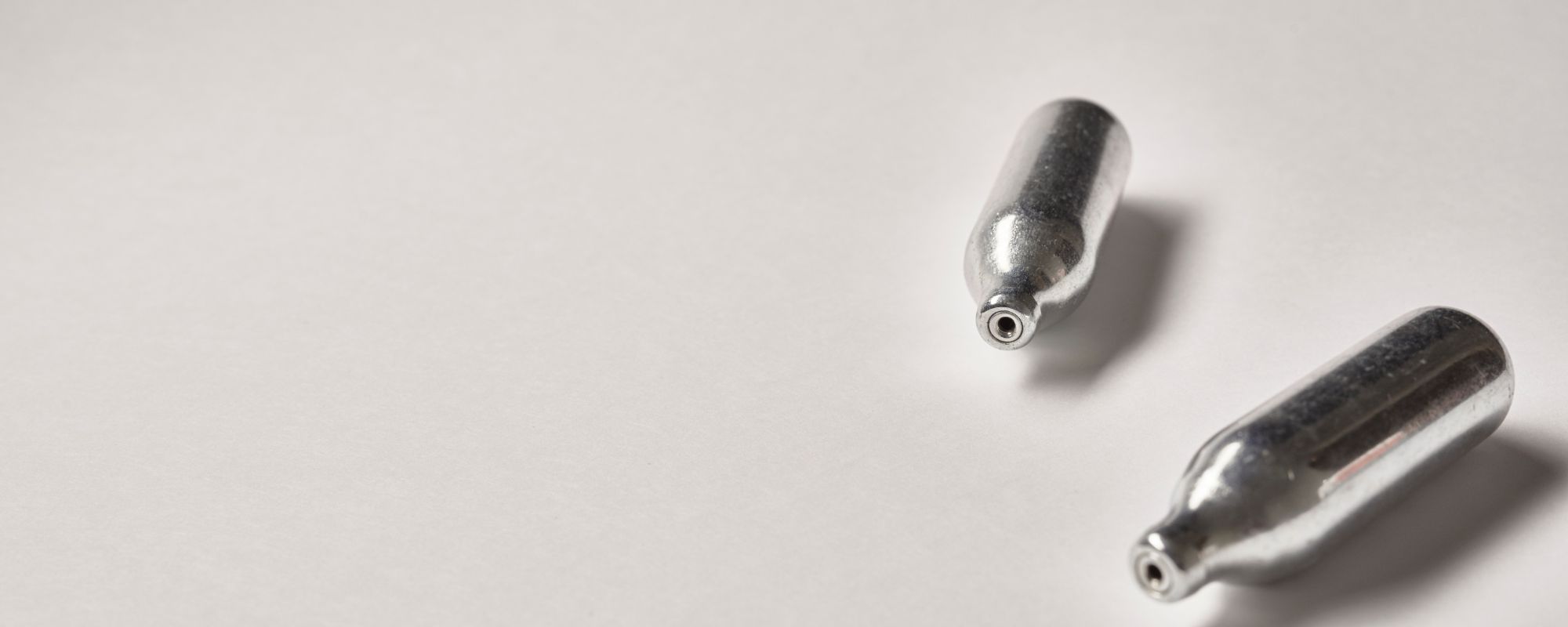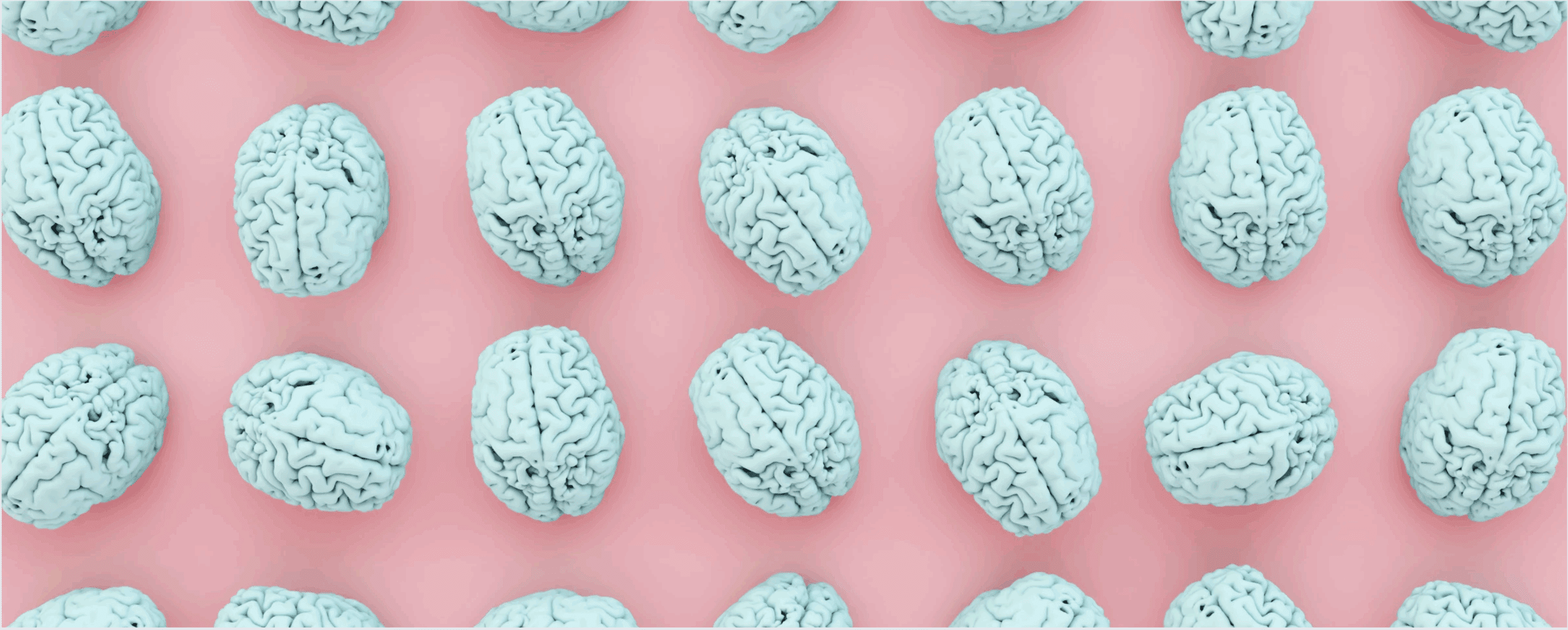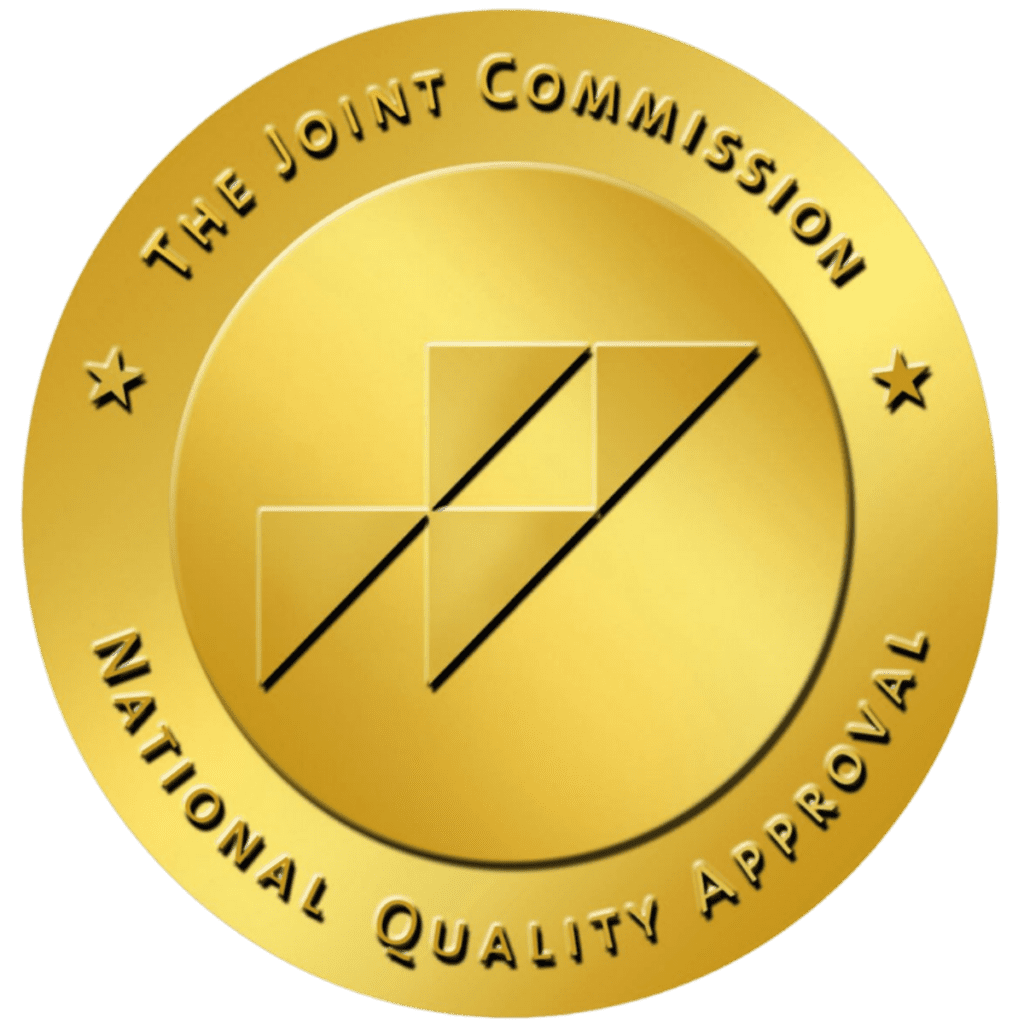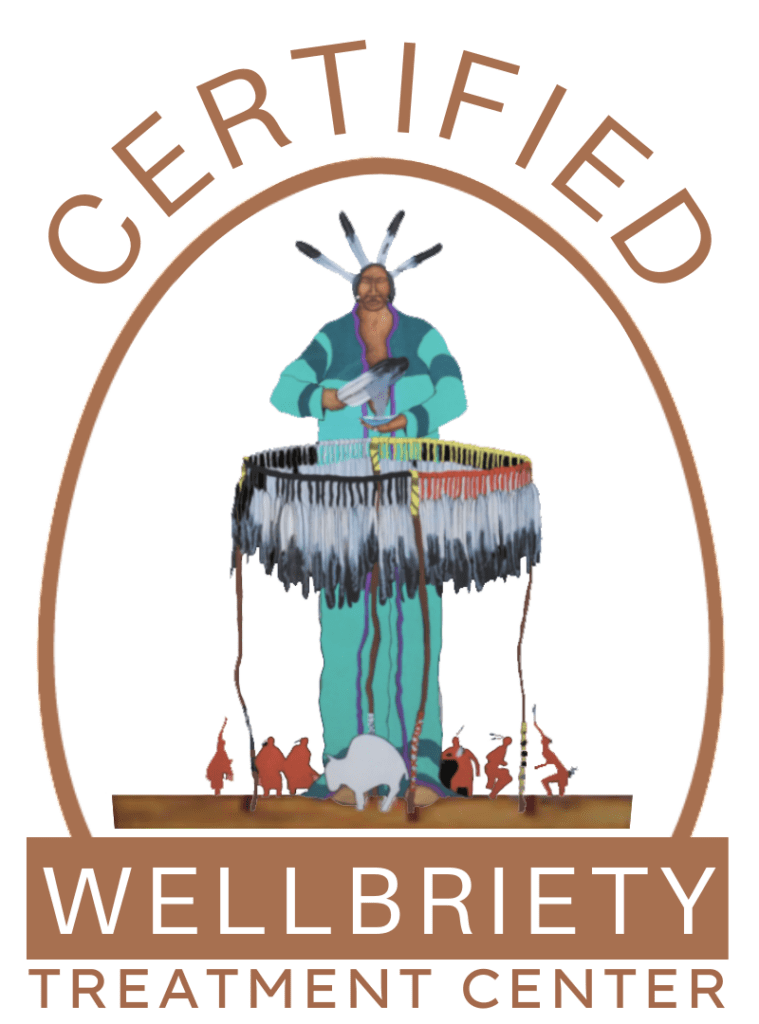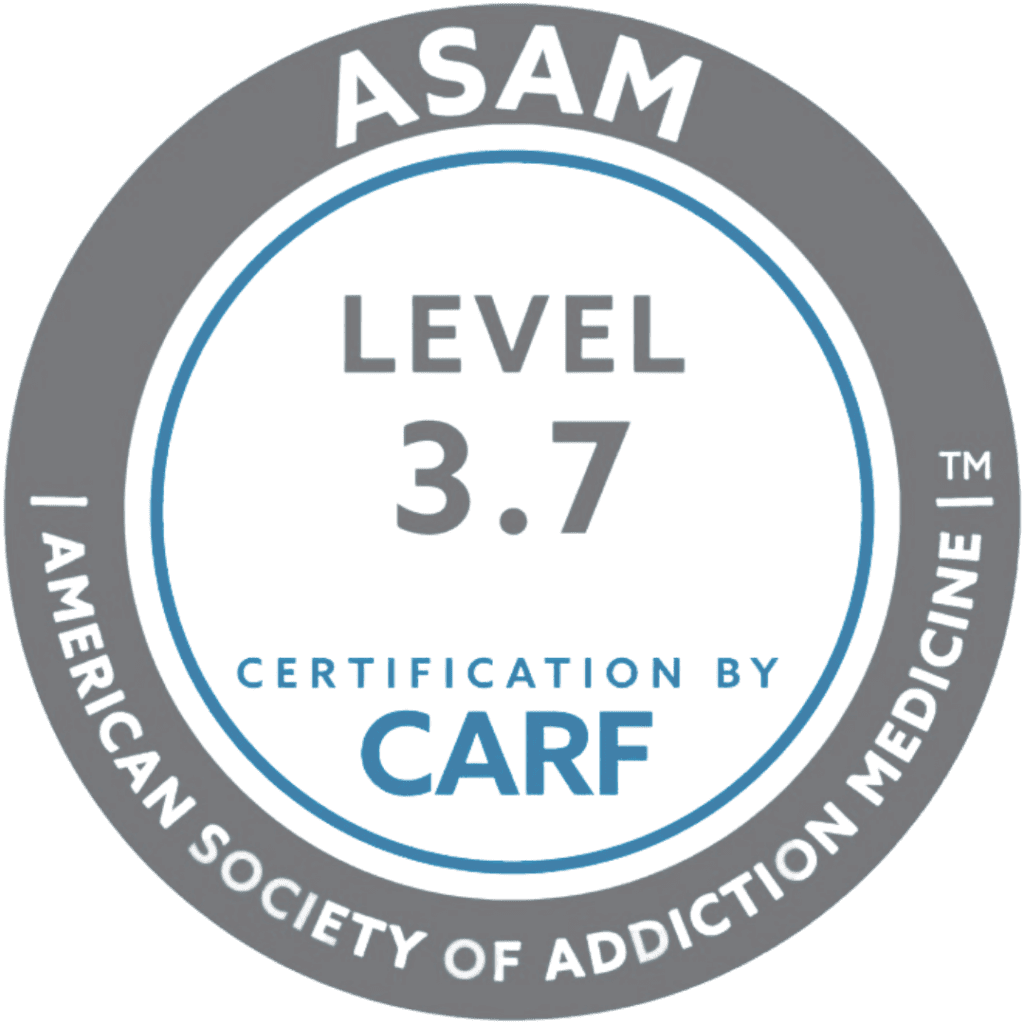In a world where various chemical substances are readily available, it’s important to understand the potential risks and consequences of combining them. One such pairing that’s gained attention in recent years is the combination of Xanax and weed. While some might view it as a way to unwind or cope with stress, it’s crucial to explore the effects of mixing these two substances. Can you mix weed and Xanax safely? It’s a question that many who struggle with drug addiction are asking themselves.
What Is Xanax?
Xanax, the brand name for alprazolam, is a medication that falls under the category of benzodiazepines. Benzodiazepines are commonly prescribed to manage anxiety and panic disorders. They work by enhancing the effects of a neurotransmitter called gamma-aminobutyric acid (GABA) in the brain, which results in a calming effect.
Xanax is available in various forms, including tablets and extended-release capsules. The tablets come in different strengths, and their shape, color, and markings can vary depending on the manufacturer. Xanax is also known by several slang terms on the streets, such as “bars” or “zanies,” often referring to the rectangular shape of the tablets.
How Common Are Xanax Prescriptions?
Xanax is typically prescribed by medical professionals, such as doctors and psychiatrists. In fact, it’s the most commonly prescribed psychiatric medication in the U.S. and mainly used to treat anxiety disorders and panic attacks. These healthcare providers assess the patient’s condition and determine which medication is an appropriate treatment option.
It’s essential to have a prescription for Xanax, as self-medication or obtaining it from unofficial sources can lead to misuse and harm. When used as prescribed, Xanax can be a valuable tool for individuals who have a lot of worry, fear, and stress that significantly impair their daily functioning. Xanax may help manage these symptoms by making you feel a sense of relaxation.
What Is Weed?
Weed, also known as marijuana, is a substance with a long history of use for both medicinal and recreational purposes. It’s a plant known scientifically as Cannabis sativa, containing various compounds, including delta-9-tetrahydrocannabinol (THC) and cannabidiol (CBD). THC is the psychoactive component responsible for the “high” associated with marijuana use.
Marijuana is used by a wide range of individuals. Some use it recreationally to unwind, socialize, or experience altered states of consciousness. Others turn to marijuana for its potential medicinal benefits, such as pain relief, appetite stimulation, and anxiety management. People ingest weed in many ways including:
- Smoking smoked in joints (like a cigarette), blunts (filled in cigar wrappers), or in bongs (pipes or water pipes)
- Mixed or infused into drinks and foods like cookies, cakes, or brownies (called edibles)
- Vaping (using vaporizers)
- Infused for drops under the tongue (tinctures or sprays)
Marijuana goes by a lot of names, including cannabis, pot, herb, bud, ganja, Mary Jane, and more. The diversity of terms reflects the rich history and cultural significance of the marijuana plant in various regions and communities.
Weed is Now Legal in Most States
The legal status of marijuana varies significantly from one location to another. Some countries and states have legalized marijuana for recreational and medicinal use, while others maintain strict prohibition. As of April 2023, 38 states, three territories and the District of Columbia allow the medical use of cannabis products. As of June 2023, 23 states, two territories and the District of Columbia have enacted measures to regulate cannabis for adult non-medical use. You must continue to stay aware of the laws and regulations in your specific area regarding marijuana use and possession.
Can You Mix Cannabis and Xanax?
No, you should not mix cannabis and Xanax. Combining cannabis and Xanax can result in an unpredictable interplay of effects. Both substances have sedative (calming) properties, but they work on different neurotransmitters in the brain. Marijuana affects the endocannabinoid system, while Xanax targets the GABA system. When used separately, they may cause relaxation and reduce anxiety. However, when combined, their effects can increase the effects of the other, potentially leading to sedation and impairment.
What Are the Risks of Mixing Weed and Xanax
Combining weed and Xanax carries several risks, including:
- Increased Sedation: The combined sedative effects can be more profound than when using each substance separately, leading to excessive drowsiness and loss of alertness.
- Impaired Cognitive Function: Both Xanax and marijuana can impair cognitive function, affecting memory, concentration, and decision-making.
- Risk of Overdose: Mixing substances increases the risk of overdose, especially when users are unsure of the purity or strength of what they’re taking.
- Heightened Anxiety: In some cases, the combination can result in heightened anxiety, panic attacks, or paranoia, which can be distressing and counterproductive.
- Dependency and Tolerance: Regularly mixing these substances can lead to tolerance and dependence, making it harder to quit or reducing their effectiveness.
- Legal Consequences: In many places, the use of Xanax without a prescription and driving under the influence of any substance is illegal. This can result in legal consequences, including fines, license suspension, and even incarceration.
One of the most serious concerns when mixing Xanax and weed is impaired cognitive and motor functions. Both substances can cause drowsiness, confusion, and poor coordination. Driving under the influence of this combination can be dangerous and is strongly discouraged. Many studies have shown that even taking just 1 milligram of Xanax resulted in increased weaving behind the wheel. Similarly, weed can slow your reaction time, impair judgment of distance, and decrease coordination. For this reason, the combination is dangerous and often life-threatening.
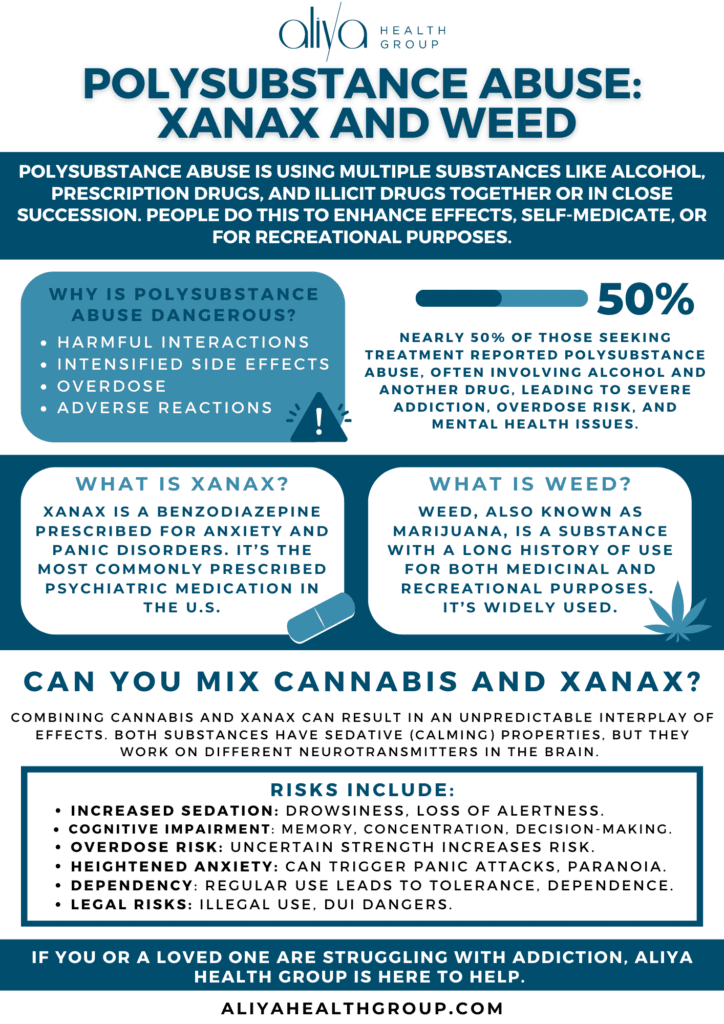
Get confidential help from our addiction and mental health treatment facilities located across the United States. Call to join one of our quality programs today!
Speak With Our Admissions TeamWhat Is Polysubstance Abuse?
Polysubstance abuse occurs when you use multiple substances, such as alcohol, prescription drugs, and illicit substances, at the same time or in close succession. People do this for a variety of reasons, including seeking heightened effects, self-medication, or recreational experimentation.
People engage in polysubstance abuse for many reasons. Some do it to boost the effects of one substance with another to reach a specific high. Others may use multiple substances to manage discomfort or self-medicate, often to relieve symptoms of anxiety, depression, or pain. Additionally, recreational users may combine substances to experiment and explore new sensations. Alcohol addiction is a common part of polysubstance abuse. Those who experiment with alcohol early on in life are more likely to suffer from alcohol addiction in the future. Taking Xanax and alcohol, for example, is very dangerous because it combines central nervous system depressants.
Why Is Polysubstance Abuse Dangerous?
Polysubstance abuse is dangerous for several reasons. Mixing different substances can result in unpredictable and potentially harmful interactions. This can intensify side effects, lead to overdose, or cause adverse reactions. The danger is made worse by the fact that users might not be aware of the risks involved when mixing substances, increasing the likelihood of harm.
Polysubstance Abuse Statistics
Understanding how common polysubstance abuse is can help shed light on the scope of the issue. According to the Substance Abuse and Mental Health Services Administration (SAMHSA), in 2020, nearly 50% of individuals who sought treatment for substance use disorders reported polysubstance abuse. The most common combination involved alcohol and another drug.
Furthermore, research from the National Institute on Drug Abuse (NIDA) indicates that polysubstance abuse can lead to more severe addiction and withdrawal symptoms. It can also increase the risk of overdose and mental health issues. These stats highlight the importance of addressing this issue and the need for education on the potential risks of combining different substances.
Looking for quality treatment for substance abuse and mental health that’s also affordable? Aliya Health Group's treatment facilities accept most major insurance providers. Get a free insurance benefits check now!
Check Your CoverageAddiction Treatment at Aliya Health Group
If you or a loved one is struggling with an addiction to Xanax, weed withdrawals, or the combination of the two substances, Aliya Health Group is here to help. Our substance abuse treatment programs is designed for a different level of need.
From detoxification, basic outpatient, intensive outpatient and partial hospitalization programs to aftercare and therapy, we’re here to show you there is a life after an addiction to chemical substances. Call us today for a free, confidential consultation about our treatment programs.
- 2020 National Survey on Drug Use and Health (NSDUH) Releases
- Alcohol Abuse Makes Prescription Drug Abuse More Likely
- Alprazolam – StatPearls – NCBI Bookshelf.
- Cannabis (Marijuana) and Cannabinoids: What You Need To Know | NCCIH
- Report State Medical Cannabis Laws
- Effects of alprazolam on driving ability, memory functioning and psychomotor performance: a randomized, placebo-controlled study
We are open 24 hours per day, 7 days per week, 365 days per year.





